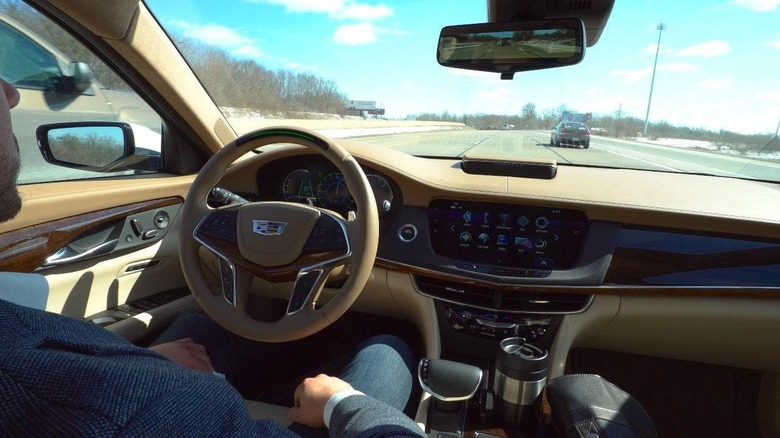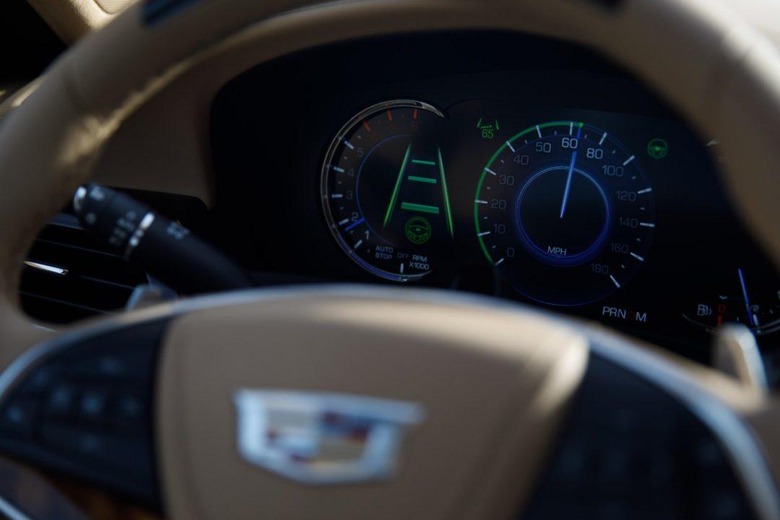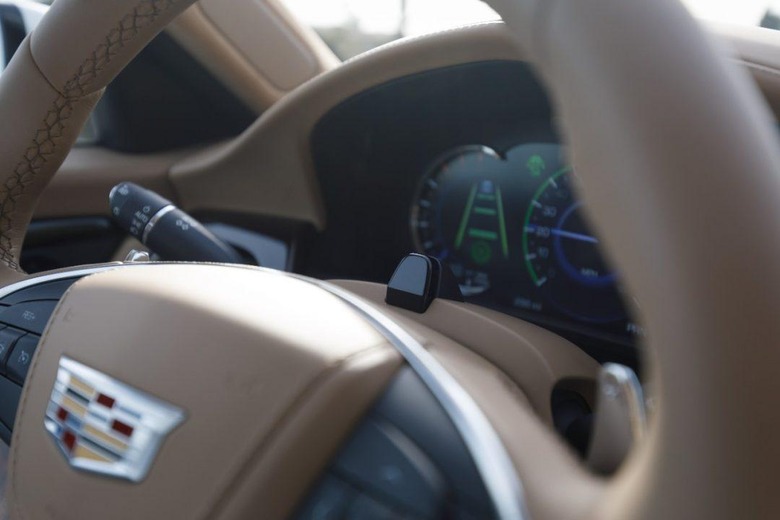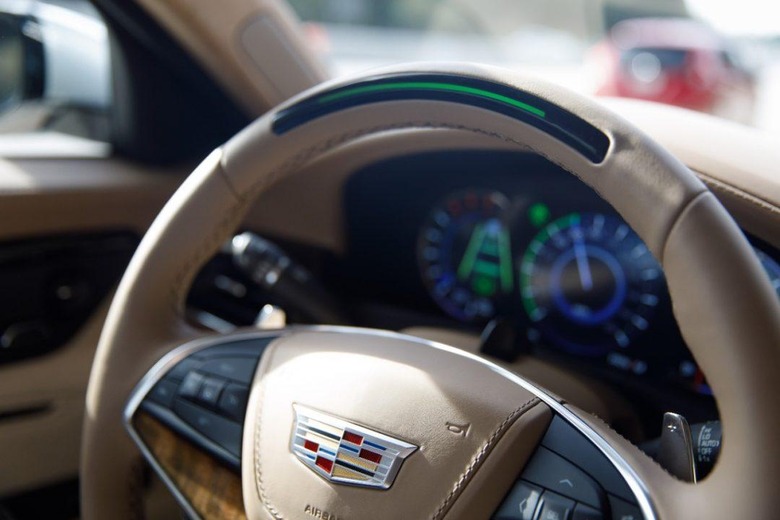Cadillac's Answer To Tesla Autopilot Won't Activate Off Highways
Cadillac's Super Cruise semi-autonomous driving system will land this fall, the automaker has confirmed, taking on Tesla's Autopilot in the process. The feature had been expected to launch in 2016 alongside the Cadillac CT6, but the automaker opted to delay its release out of a surfeit of caution. Now, though, it'll be offered as an option on the 2018 Cadillac CT6 from this fall.
Super Cruise promises to build upon the existing adaptive cruise control offered in the CT6 and other Cadillac cars, which can already keep pace with traffic. It adds automatic lane-centering, so that the car will be able to navigate lanes on highways by itself. Unusually, the automaker is also going to limit exactly where owners will be able to turn Super Cruise on.
While it may not be the first to market with a semi-autonomous driving system, Cadillac couldn't help but level a little snark at the competition. The core of that is the technology Cadillac has chosen to outfit the CT6 with. Where Tesla's system relies solely on cameras and radar sensors, Super Cruise throws in LIDAR too.
LIDAR – or Light Detection and Ranging – has become a common feature on self-driving cars. It effectively scans the environment around the sensor to build up a real-time 3D point cloud, picking up other vehicles, pedestrians, and other obstacles. Though far more precise than camera and radar systems alone, its primary downside is its cost, with the sensors often the most expensive component on self-driving cars.

In the case of Super Cruise, a LIDAR sensor will be combined with onboard cameras and radar sensors, in addition to a high-accuracy GPS 4-8x more precise than usual. Real-time data from those sensors will be combined with a LIDAR-scanned map database, which Cadillac has been building just for the system. It apparently incorporates every mile of limited-access highway in the US and Canada, not only the twists and turns of the road, but details on changes in incline from going up or down hills.
In short, Super Cruise knows what to expect from the road ahead. When it doesn't know – such as when the car leaves a highway by a defined off-ramp – it will be disabled. Unlike Tesla's Autopilot, which can be switched on while driving on routes other than just highways, Cadillac's system will only work when the company is confident in its abilities.
According to Cadillac, even with this limitation in place, drivers could find themselves benefiting from Super Cruise more often than not. "American drivers travel twice as many miles on urban and suburban highways as they do on rural roads," Barry Walkup, chief engineer of Cadillac Super Cruise, points out. "Super Cruise allows hands-free driving and operates only within the environment where it has the most benefit."

It's a distinctly different strategy than that employed by Tesla, whose Autopilot system has become synonymous with semi-autonomous driving – and, CEO Elon Musk has promised, will one day flourish into fully-autonomous technology. Tesla has taken a more proactive approach, initially adding Autopilot to owners' cars through overnight updates, and then periodically upgrading and tweaking the system as it gathers real-world data. Tesla drivers themselves have become willing test-pilots, in effect, putting Autopilot through its paces as the algorithms are progressively refined.
That hasn't always been a smooth path, mind. Autopilot has been blamed or implicated in a number of crashes, most memorably an incident in 2016 where an owner was killed after switching on the semi-autonomous system and then failing to recognize a truck pulling across the road. A subsequent NHTSA investigation found that the crash had been operator error, blaming the driver for not paying sufficient attention.
It's something Cadillac has been cautious about, even as it says Super Cruise is technologically ready for use on more than just the highways the automaker has mapped. "While it is technically possible for the technology to drive hands-free on other kinds of streets and roads," Walkup says, "we feel strongly that this targeted approach is the best to build consumer and regulatory confidence and enthusiasm for advanced mobility."

Indeed, the other exclusive feature of Super Cruise compared to other semi-autonomous systems of its ilk is driver attention awareness. A small camera atop the steering column will use infrared light to track the driver's head position; that will allow the system to figure out where the driver is looking. If they're not paying sufficient attention to the road ahead, dashboard prompts will be given to encourage that.
Should the driver continue to ignore the road, however, a steering wheel light bar will direct their attention more explicitly. Further escalations can include notifications in the digital dashboard, seat vibrations, and audible warnings. Should the driver be unable to retake control – such as from a medical issue – Super Cruise is able to bring the CT6 to a controlled stop, and then use OnStar to contact emergency services on their behalf.

"The development of Super Cruise reflects a responsible and safety-oriented approach to the rollout of this advanced technology," Johan de Nysschen, Cadillac president, argues of the company's decisions.
NOW READ: 2017 Cadillac CT6 Review
Super Cruise will be made available as an option on the 2018 CT6 Prestige from this fall, in both the US and Canada. Pricing for the feature is unknown at this stage, though we may well find out more at the New York International Auto Show 2017 this week. Unfortunately for existing CT6 owners, the technology won't support retrofitting.
